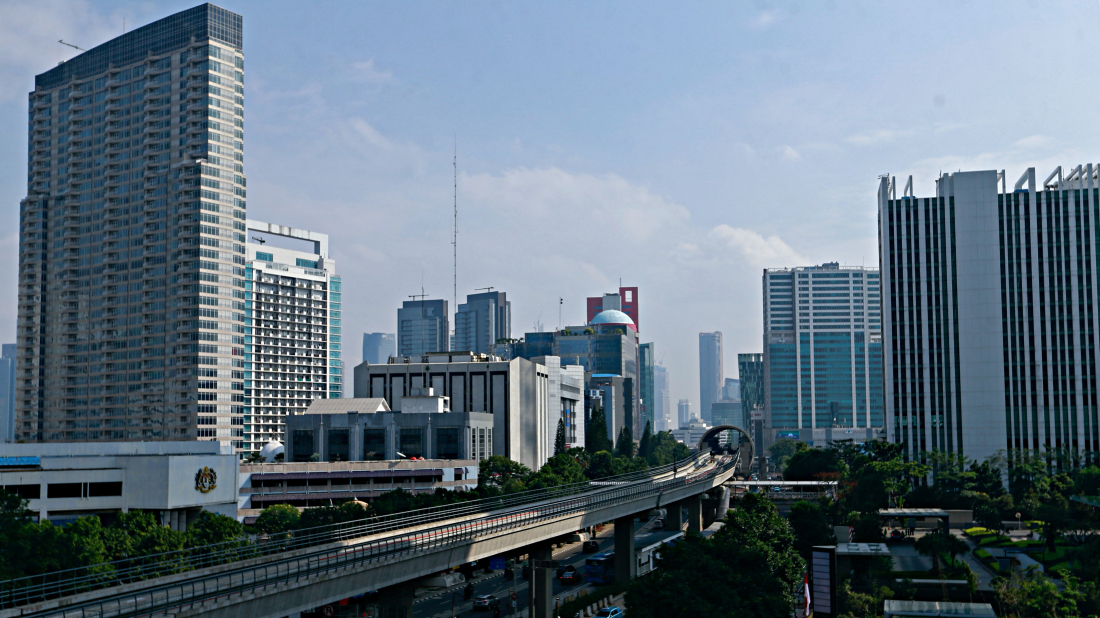AnewZ Investigations launch with documentary examining Ruben Vardanyan
AnewZ has premiered The Oligarch’s Design, a long-form investigative documentary marking the launch of AnewZ Investigations, the channel’s new edi...

An Indonesian garment factory supplying major U.S.-based clothing brands is looking to reduce its reliance on the American market, despite a new tariff deal lowering export duties to the United States.
The factory, managed by 62-year-old Deddy Mulyadi in Central Java, has long exported the bulk of its products – including denim trousers – to the U.S. market. But with recent tariff changes and shifting global demand, the company is now seeking to diversify its export destinations.
"Of course, this policy was unexpected because with this tariff war, all of our estimates have been thrown off. We usually export to the United States, and now with the tariff war hitting our regular market in the U.S., it has affected our margins," said Mulyadi, who has managed the facility for 27 years.
The U.S. recently reduced tariffs on Indonesian garments from 32% to 19% as part of a deal under former President Donald Trump’s administration.
The move brought Indonesia’s rate in line with the Philippines and slightly below Vietnam’s 20%, prompting speculation that Indonesia could become more attractive for foreign buyers.
"Most of these textile products are for multinational brands, and of course these products will compete with other products from other countries,” said Andry Satrio Nugroho, a researcher at Indonesia’s Institute for Development of Economics and Finance (INDEF).
“We know Vietnam also does the same thing, exporting their textile products to the U.S., as well as other ASEAN countries. Of course if our prices are much cheaper than these competitors we will become the U.S.'s destination for investing in branded product manufacturing, so this could be an opportunity for us if the 19% tariffs on our products end up being the lowest among ASEAN countries."
Despite the potential opportunity, Deddy said high U.S. inflation and rising prices could impact consumer demand and pressure Indonesian exporters.
"This will impact the market for buyers or end-users, as they will have to purchase goods at higher prices due to additional tariffs. These are leading to higher prices, fewer buyers due to high inflation in the United States. Importers will certainly demand efficiency from us, (and we need to be efficient) if we want to remain competitive," he said.
According to Indonesia's Center of Statistics, the United States is the top destination for the country’s garment and textile exports. Last year, around 155,000 of 299,000 tonnes—about 51%—of Indonesian garment exports were shipped to the U.S.
While the tariff drop offers some relief, analysts say a long-term strategy to broaden export markets is essential.
"The 32% to 19% tariff drop is much better even though there's still a high tariff there. This gives some breathing room to the manufacturers of these products while we eye opportunities to not rely on the U.S. market. We have to switch as soon as possible to other first-world countries. For example, Europe is a potential market for us going forward after the United States. Manufacturers need to quickly diversify their export destinations for these products," Nugroho said.
Deddy echoed that view, revealing plans to expand into other regions.
"About 80% of our exports go to America, 15% to Europe, and the rest to the Middle East, Australia, Latin America, Canada, and surrounding areas. We have not yet entered countries around Russia and Spain, it will be our next target," he said.
Drone footage of the Jakarta International Container Terminal showed stacked containers and docked ships, illustrating Indonesia’s active role in global trade. But for factories like Deddy’s, navigating geopolitical shifts and global economic pressures has become a delicate balancing act.
Ukraine has welcomed the European Union’s decision to provide €90 billion in support over the next two years, calling it a vital lifeline even as the bloc failed to reach agreement on using frozen Russian assets to finance the aid.
European Union foreign policy chief Kaja Kallas has warned that attempts to reach a peace agreement in Ukraine are being undermined by Russia’s continued refusal to engage meaningfully in negotiations.
Petroleum products are being transported by rail from Azerbaijan to Armenia for the first time in decades. The move is hailed as a tangible breakthrough in efforts to normalise relations between the long-time rivals.
U.S. President Donald Trump delivered a wide-ranging address from the White House in which he sought to highlight what he described as his administration’s achievements while laying the groundwork for his plans for the year ahead and beyond, on Wednesday (18 December).
A rare pair of bright-green Nike “Grinch” sneakers worn and signed by the late NBA legend Kobe Bryant have gone on public display in Beverly Hills, ahead of an auction that could set a new record for sports memorabilia.
The foreign ministers of Cambodia and Thailand have told Chinese Foreign Minister Wang Yi that they are willing to pursue a ceasefire, as tensions flared along parts of the two countries’ shared border.
The Conservative Party says it would cut funding for green energy projects and redirect the money into defence, arguing the UK needs to be ready for war.
The European Union is facing mounting political pressure over its ability to keep Russian sovereign assets frozen, as internal divisions, leadership changes and war fatigue reshape decision-making across the bloc.
Kazakh President Kassym-Jomart Tokayev’s first official visit to Japan marks a notable moment in relations between the two countries, reflecting a shared interest in deepening cooperation.
The long-running geopolitical tug-of-war over the world’s most popular short-form video application appears to have reached its finale, resolving a five-year saga that bridged two US presidencies and a brief nationwide service blackout.
You can download the AnewZ application from Play Store and the App Store.

What is your opinion on this topic?
Leave the first comment